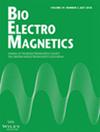下载PDF
{"title":"射频电磁场对静息时心脏活动的影响:健康人体研究的系统综述","authors":"Lisa Michelant, Brahim Selmaoui","doi":"10.1002/bem.70014","DOIUrl":null,"url":null,"abstract":"<p>Radiofrequency electromagnetic fields (RF-EMF) exposure is increasingly prevalent, raising concerns about potential non-thermal health effects. This systematic review synthesizes current evidence regarding RF exposure effects on cardiac activity, focusing on heart rate (HR) and heart rate variability (HRV). Studies on healthy individuals were selected based on strict methodological criteria, including experimental design, control for confounding variables, and sufficient details on exposure parameters. Articles were included if they compared healthy subjects with and without exposure and provided cardiac measurements, specific absorption rate, or exposure measurement. A total of 28 articles were analyzed. This review included studies with RF exposure ranging from 100 to 110,000 MHz and exposure durations varying from short periods to 7 nights, with most studies lasting between 5 and 50 min. Most studies demonstrated no significant effects of RF exposure on HR, regardless of the exposure system, frequency, duration, age, sex, distance, or subject position. Findings for HRV were more nuanced, with most studies indicating no significant impact on key HRV parameters. However, some position-dependent variations emerged, particularly in antenna-based studies. Additionally, our analysis suggests that RF exposure may particularly interfere with cardiac regulatory mechanisms when the cardiovascular system is challenged and required to adapt, such as during postural changes or physiological maneuvers, although there are insufficient comparable studies to validate this hypothesis. Importantly, all included studies were conducted under resting or non-stressful conditions and involved only healthy participants. Therefore, our conclusions cannot be generalized to stressed states or clinical populations. Moreover, methodological harmonization is needed to improve comparability across future studies. The main limitation of the current evidence being the heterogeneity of experimental protocols, highlighting the need for methodological standardization in future studies. To address current heterogeneity, we propose specific methodological recommendations, including systematic blinding, accurate exposure measurement and detailed exposure, to improve comparability and reproducibility in future studies. Bioelectromagnetics. 00:00–00, 2025. © 2025 Bioelectromagnetics Society.</p>","PeriodicalId":8956,"journal":{"name":"Bioelectromagnetics","volume":"46 5","pages":""},"PeriodicalIF":1.2000,"publicationDate":"2025-07-15","publicationTypes":"Journal Article","fieldsOfStudy":null,"isOpenAccess":false,"openAccessPdf":"https://onlinelibrary.wiley.com/doi/epdf/10.1002/bem.70014","citationCount":"0","resultStr":"{\"title\":\"Impact of Radiofrequency Electromagnetic Fields on Cardiac Activity at Rest: A Systematic Review of Healthy Human Studies\",\"authors\":\"Lisa Michelant, Brahim Selmaoui\",\"doi\":\"10.1002/bem.70014\",\"DOIUrl\":null,\"url\":null,\"abstract\":\"<p>Radiofrequency electromagnetic fields (RF-EMF) exposure is increasingly prevalent, raising concerns about potential non-thermal health effects. This systematic review synthesizes current evidence regarding RF exposure effects on cardiac activity, focusing on heart rate (HR) and heart rate variability (HRV). Studies on healthy individuals were selected based on strict methodological criteria, including experimental design, control for confounding variables, and sufficient details on exposure parameters. Articles were included if they compared healthy subjects with and without exposure and provided cardiac measurements, specific absorption rate, or exposure measurement. A total of 28 articles were analyzed. This review included studies with RF exposure ranging from 100 to 110,000 MHz and exposure durations varying from short periods to 7 nights, with most studies lasting between 5 and 50 min. Most studies demonstrated no significant effects of RF exposure on HR, regardless of the exposure system, frequency, duration, age, sex, distance, or subject position. Findings for HRV were more nuanced, with most studies indicating no significant impact on key HRV parameters. However, some position-dependent variations emerged, particularly in antenna-based studies. Additionally, our analysis suggests that RF exposure may particularly interfere with cardiac regulatory mechanisms when the cardiovascular system is challenged and required to adapt, such as during postural changes or physiological maneuvers, although there are insufficient comparable studies to validate this hypothesis. Importantly, all included studies were conducted under resting or non-stressful conditions and involved only healthy participants. Therefore, our conclusions cannot be generalized to stressed states or clinical populations. Moreover, methodological harmonization is needed to improve comparability across future studies. The main limitation of the current evidence being the heterogeneity of experimental protocols, highlighting the need for methodological standardization in future studies. To address current heterogeneity, we propose specific methodological recommendations, including systematic blinding, accurate exposure measurement and detailed exposure, to improve comparability and reproducibility in future studies. Bioelectromagnetics. 00:00–00, 2025. © 2025 Bioelectromagnetics Society.</p>\",\"PeriodicalId\":8956,\"journal\":{\"name\":\"Bioelectromagnetics\",\"volume\":\"46 5\",\"pages\":\"\"},\"PeriodicalIF\":1.2000,\"publicationDate\":\"2025-07-15\",\"publicationTypes\":\"Journal Article\",\"fieldsOfStudy\":null,\"isOpenAccess\":false,\"openAccessPdf\":\"https://onlinelibrary.wiley.com/doi/epdf/10.1002/bem.70014\",\"citationCount\":\"0\",\"resultStr\":null,\"platform\":\"Semanticscholar\",\"paperid\":null,\"PeriodicalName\":\"Bioelectromagnetics\",\"FirstCategoryId\":\"99\",\"ListUrlMain\":\"https://onlinelibrary.wiley.com/doi/10.1002/bem.70014\",\"RegionNum\":3,\"RegionCategory\":\"生物学\",\"ArticlePicture\":[],\"TitleCN\":null,\"AbstractTextCN\":null,\"PMCID\":null,\"EPubDate\":\"\",\"PubModel\":\"\",\"JCR\":\"Q3\",\"JCRName\":\"BIOLOGY\",\"Score\":null,\"Total\":0}","platform":"Semanticscholar","paperid":null,"PeriodicalName":"Bioelectromagnetics","FirstCategoryId":"99","ListUrlMain":"https://onlinelibrary.wiley.com/doi/10.1002/bem.70014","RegionNum":3,"RegionCategory":"生物学","ArticlePicture":[],"TitleCN":null,"AbstractTextCN":null,"PMCID":null,"EPubDate":"","PubModel":"","JCR":"Q3","JCRName":"BIOLOGY","Score":null,"Total":0}
引用次数: 0
引用
批量引用


 求助内容:
求助内容: 应助结果提醒方式:
应助结果提醒方式:


